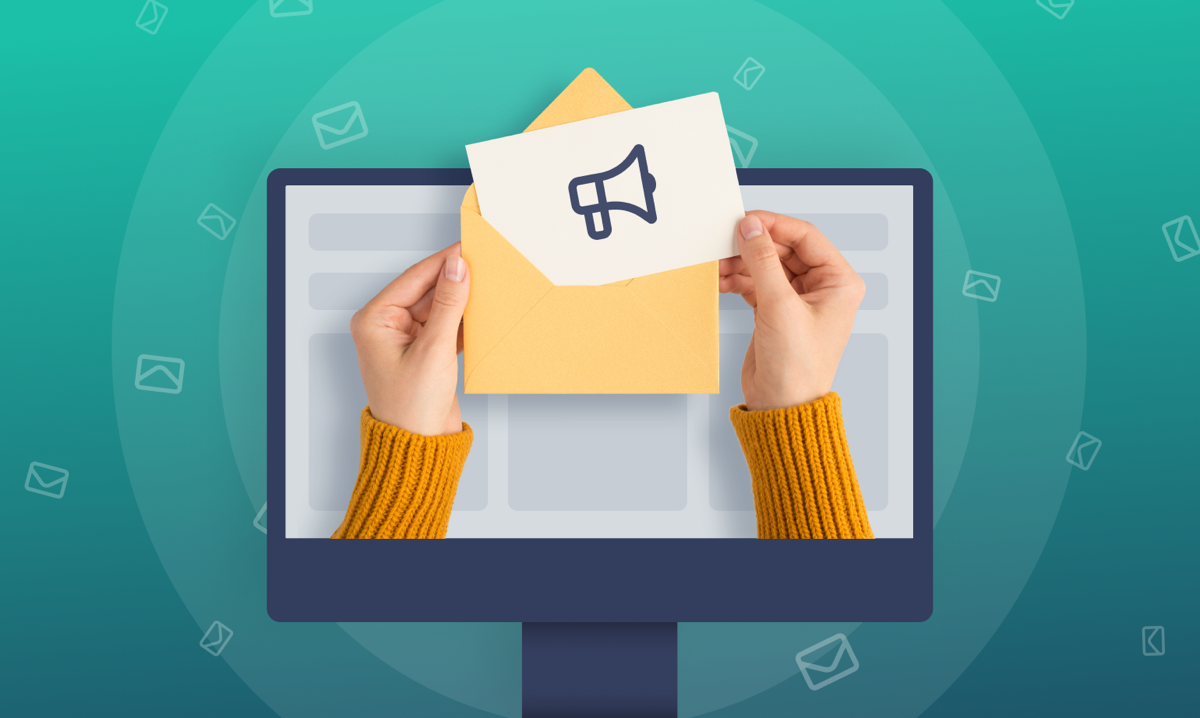
An email has massive potential in insurance marketing.
Companies and people send and receive 319.6 billion emails every day, and globally, there are 4.14 billion email users. As of 2022, 82% of marketers use email marketing.
Marketers like email marketing because it gets results. 18% of marketing emails are opened, and 2.6% of email readers click on a Call-To-Action (CTA) or link inside the email.
The Return on Investment (ROI) of email marketing is also very strong. For every $1 invested, email marketing returns an average of $36. This figure goes as high as $45 in consumer goods and eCommerce and as low as $32 in entertainment and media.
The point is that email marketing matters. Below are six tips to make your insurance email marketing campaigns more engaging (and thus, more profitable).
What is email marketing?
Email marketing is when you send promotional materials to people via their email addresses. Think of email marketing as the cheaper and more modern version of postal advertising.
Email marketing dates back to 1978, when its founder, Gary Thuerk, used email to send a promotional message to 400 people. Gary succeeded in selling $13 million in computing goods, and subsequently, people started to see value in the marketing channel.
In the many years since then, email marketing has grown in popularity. In 2020, the worldwide email marketing market held a value of $7.5 billion. Email marketing is expected to grow at a Compound Annual Growth Rate (CAGR) of 13.3% until 2027. That year, it should reach a valuation of $17.9 billion.
The rise in email marketing isn’t just due to brands adopting it as a promotional platform. Forty-six percent of customers now prefer for brands to contact them through email. And they’re using email to reach companies in return — annually, the use of email to reach brands grow by 12%.
Insurance companies use email marketing to nurture new leads, create relationships with new customers, and re-engage old customers. Some other benefits of using email marketing for insurance include:
- You can target different segments of insurance customers with separate campaigns
- You can nurture a connection with customers throughout their insurance plan (making them more likely to renew when it expires)
- You can promote your business without being overly sales-focused (this will help you build trust with customers who’ve had negative experiences with sales-obsessed insurance companies before)
- You can adjust your emails throughout each campaign based on your results
Now, when learning about email marketing, it’s crucial to understand the role automation plays.
Automation allows marketers to send communications automatically when subscribers hit certain triggers (like filling out a form for a quote or abandoning their cart). It also helps marketers send emails at peak times, reduce administration tasks, and analyze their marketing data.
Studies show that 65% of marketers use automation in email marketing. There are many email marketing automation options available today, including insurance industry-specific ones like Pathway. Pathway’s Marketing Bot helps you automate distributing your emails and collecting and interpreting data.
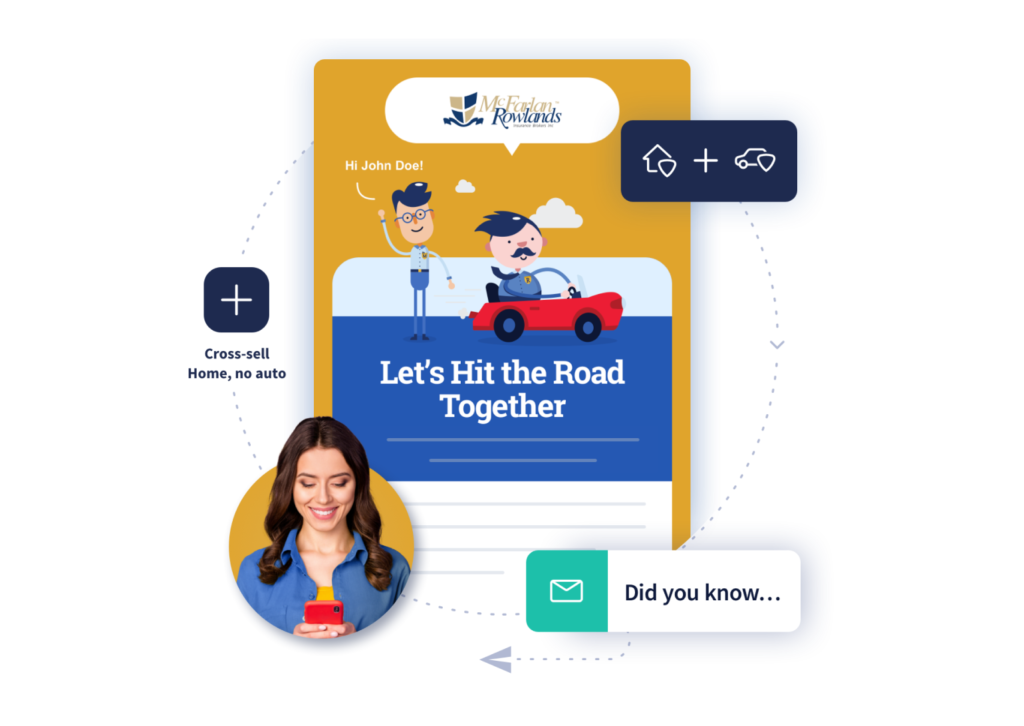
Email marketing tips to supercharge your insurance campaigns
All email marketing campaigns are not created equal. Some campaigns excite readers and convert them with unique tactics. Other campaigns fail to stand out in a crowded inbox.
Below are six tips to help you supercharge your insurance email marketing campaign.
1. Build a robust email list
When insurance companies plan an email marketing campaign, they often focus on the contents of emails. This focus is vital but pointless if you don’t have a robust email list.
Put simply, your email list is the group of people who have signed up to receive your marketing communications. The list includes people’s email addresses, names, and any other data they’ve given you (age, gender, location, etc.).
You can’t just take your customers’ email addresses and add them to your email list — your subscribers must provide consent by clicking on a box that says something like this:
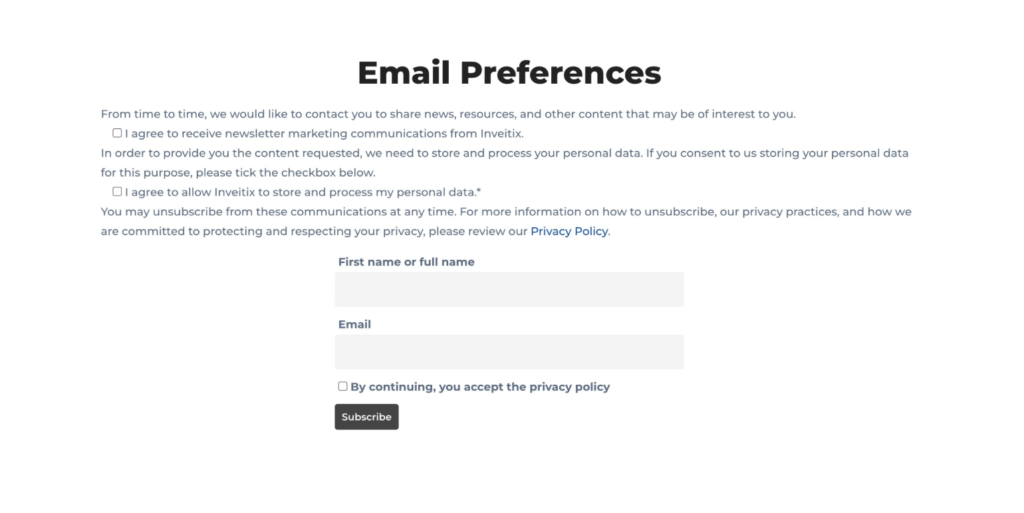
Source: VolaSoftware
Now, people don’t just join email addresses for no reason. So how do you get people to sign up? Try these strategies:
Use a lead magnet
As the name suggests, a lead magnet is something that appeals to people to the point they would give you their email address in exchange. Examples of lead magnets include industry reports, eBooks, printables, high-quality images, how-to guides, templates, and lists (like below).
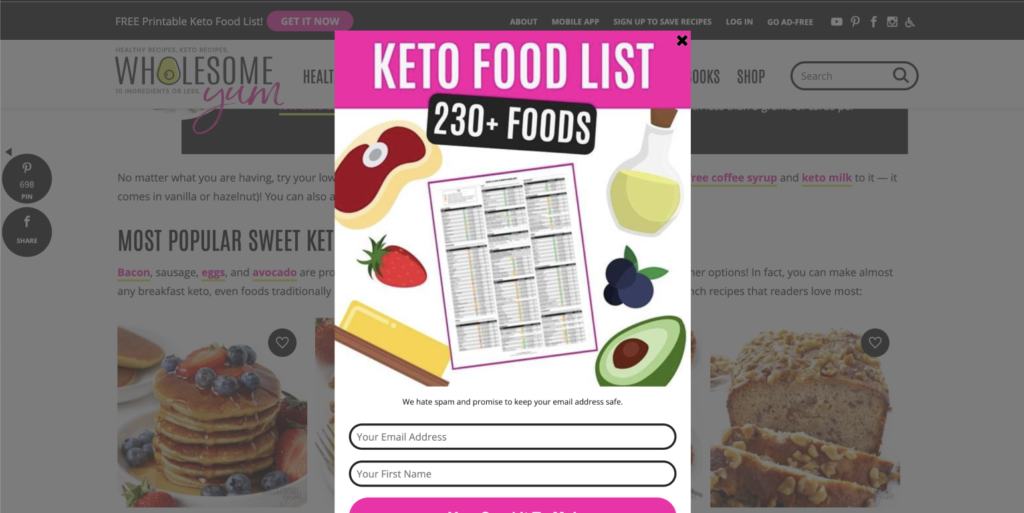
Source:WholesomeYum
Some businesses also offer physical lead magnets like calendars (though this could get expensive quickly if you serve policyholders in a large area).
You can develop an A+ lead magnet by identifying information your potential customers need but can’t currently find easily. For example, an insurance agency that offers boat insurance could create a 50-page booklet with expert tips for new boat owners.
Offer people an emailed copy of their quote
Many insurance agencies have forms on their websites that leads can fill out to see what a specific plan would cost them. To use this form to get sign-ups, offer to send leads a printable copy of their quote in exchange for their email address.
Offer a monetary reward
Lead magnets work great for niche products, but they don’t suit every customer. This fact isn’t true of discounts — almost no one wants to pay more when they don’t have to.
If you choose to give people a discount in exchange for their email address, make sure you make it large enough that it’s appealing but not so big that it devalues your offerings. Discounts between 15% and 30% walk this line well.
A great way to make sure your lead converts quickly is to place a time limit on their reward. Two days to one week is a good limit. Any longer and people will forget, and any shorter, and people might not have enough time to make an informed purchasing decision.
Add non-monetary value
Finally, try offering leads extra value or services for their email address. For example, you could offer access to an exclusive tool or a scheduled consultation with an insurance expert that can review their coverage and provide advice.
2. Share a mix of content
Your readers are busy, so they won’t sit down and read your marketing emails like a novel no matter how much they support your business.
An analysis of 8 billion emails opened by Statista shows that consumers worldwide spent just 10 seconds on average reading a marketing email in 2021. This figure was down from 13.4 seconds in 2018 and 11.8 seconds in 2020.
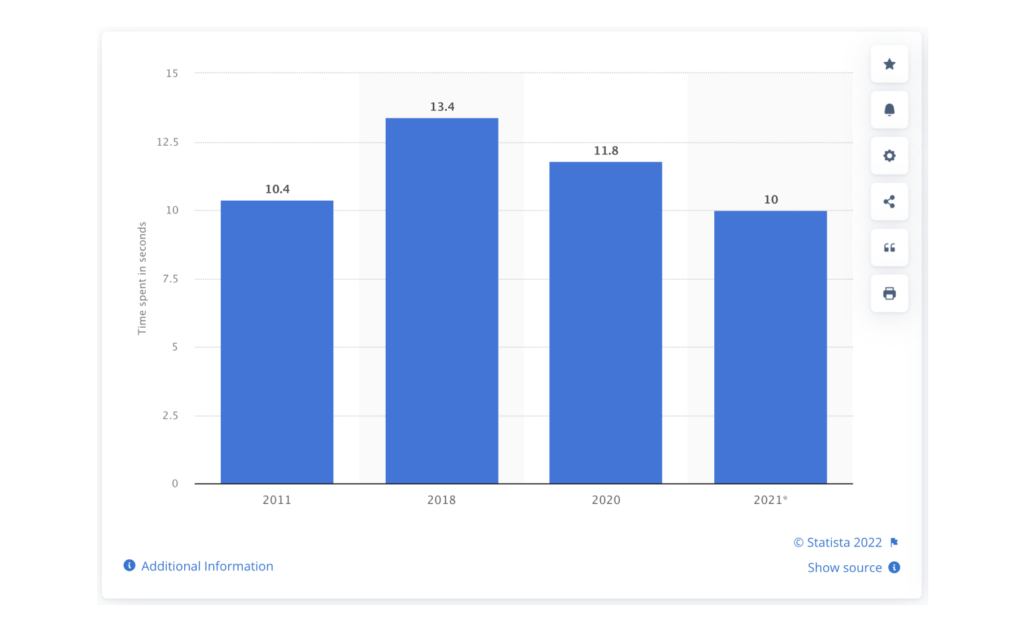
Source:Statista
These dips aren’t outliers to ignore. Statista notes that “recently, people are spending less time reading brand emails,” and though it doesn’t give a reason, it’s not hard to imagine several. People now use their devices for various purposes and often have competing tabs and tasks. Millions of brands are now also vying for people’s attention using email marketing.
Whatever the reason, the takeaway is clear: you need to make your emails memorable and engaging to keep people reading.
One way to do this is by sharing a mixture of marketing content to keep things fresh. For example, you can share:
- Welcome emails. These greet new subscribers and provide a first impression. Welcome emails typically have the highest engagement rates.
- Onboarding emails. These draw readers in by offering help with onboarding and access to resources like your FAQ section and knowledge base.
- Cross-selling emails. These show subscribers’ plans and services complementary to things they’ve already purchased (for example, you could send your car insurance customers a cross-selling email for camper and trailer insurance).
- Up-selling emails. These offer subscribers upgrades to their current plan.
- Cart abandonment emails. These emails remind customers to complete a purchase they started.
- Seasonal greeting emails. These build your relationship with leads and customers by wishing them well. They are also a great chance to offer a seasonal discount or coupon.
- Themed emails. These use current or seasonal events to grab people’s attention (for example, you could send car insurance customers an email about driving safely in snow over winter).
- Sales emails. These emails give subscribers access to exclusive discounts.
- Updates on new policies. These emails inform customers about new plans your company offers.
If subscribers know they aren’t going to see the same type of email every time, they’re more likely to click on your email.
Another way to keep emails engaging is to leverage your email design. You can use white or negative space to draw people’s eyes to key sections or your CTA. Additionally, you can use color to create a warm and friendly atmosphere, clever copywriting to get a reaction from readers, and videos, gifs, and images to share information in an easily digestible way.
After you’ve nailed your design, consider switching up the contents of each section to keep emails unique. Use fresh photos, new copywriting, and unique phrasing for your CTA.
3. Be consistent with your newsletters and outreach
It’s natural for your motivation to send marketing emails to be highest when you first start your email campaign. However, you need to try and maintain that effort, or else it will cost your campaign long-term.
Consistency matters the most when it comes to newsletters and outreach. In both cases, people will recognize your branding and come to expect particular things. If you don’t deliver, you will disrupt the trust you’ve built.
To keep your newsletters consistent and high-quality, feature the same sections in each email and alter the content. For example, you could include a featured article, a section linking to blog posts, a social media post, and a question from a customer (+ an answer).
Generally, you should also keep your styles, colors, and branding consistent so your marketing is easily recognizable as yours. However, feel free to change up fonts, images, shades, shapes, and phrasing to make your emails visually interesting.
These tips are also true of your outreach emails — they should look like “yours.”
With outreach emails, you also want to make your emails complementary so people are more likely to read multiple. You can do this by referencing your other outreach emails. For example, you could put “(part 1)” and “(part 2)” in the subject line or use phrases like “in our last email, we shared that…” and summarize the previous email. Additionally, add a teaser for the next email and tell customers when to expect it. This last trick will build anticipation.
Timing is also important for both newsletters and outreach emails. Let’s cover that next.
4. Find the right email frequency for your lists
Email marketing campaigns are like rolling snowballs — they grow bigger as they gather more momentum. The best way to keep your brand rolling is to build a regular email marketing schedule that puts your emails in front of customers during optimum times.
For best results, account for three categories of marketing emails in your schedule:
- Weekly emails. This list should include your newsletter.
- Monthly emails. This list should include sales emails and customer education emails.
- Quarterly emails. This includes seasonal emails, themed emails, and updates about your company.
You don’t need to draft all these emails upfront. Instead, aim to have them ready for publishing at least 48 hours before you are due to send them out.
Now, when it comes to when you should publish each email specifically, you should look to research. Research from GetResponse on 4 billion marketing emails shows that:
- People open more marketing emails on Fridays (Friday’s open rate is 18.9%)
- People press more CTAs on Fridays (Friday’s Click-Through Rate (CTR) is 2.7%)
- People press “unsubscribe” least often on Sundays (Sunday’s unsubscribe rate is 0.1%)
People engage with emails fairly consistently throughout the workday, with spikes in the early morning and late evening.
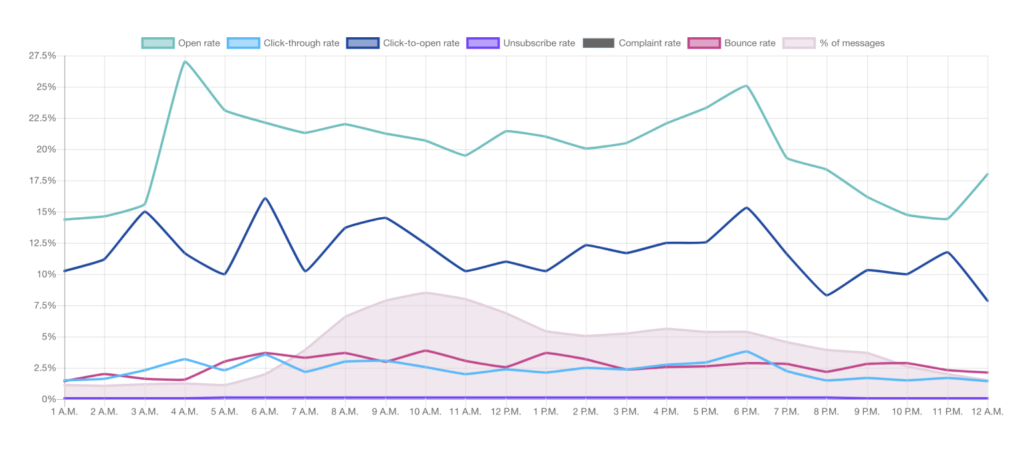
Source: GetResponse
Take this research as a guide, but look at your own email marketing statistics as well. Your subscribers are unique, and you might notice trends that indicate they like to receive emails at different times than the average consumer.
Now, some marketing emails won’t apply to your whole email list, including trigger-driven emails. Trigger-driven emails are the ones your marketing tool sends to customers automatically when they take a set action.
To get the most from trigger-driven emails, try setting up a mini-schedule that ensures you get the best response from subscribers. For example, you might send a cart abandonment email 24 hours after the lead abandons their cart. Then, you might send a re-engagement email 48-hours and 72-hours later.
It’s important to send these emails at the perfect time. If they are too close together, readers will get annoyed and hit “unsubscribe,” and if they aren’t close enough together, readers will lose interest. Put at least one day between each email, and never send more than five emails in one week.
5. Provide value to your recipients
One of the fastest ways to lose email readers is to fill your email with fluffy content that doesn’t capture their imaginations or inspire them to press your CTA. You need to provide value.
Now, this doesn’t mean you should fill your email with thousands of words of content, as readers will likely see long paragraphs and click “back.” Instead, you should focus on providing new, unique, and actionable information.
For example, this email from insurance provider RACV shares ways people can make their homes more resilient to wildfires. This topic is widely appealing, and it’s not something most people will know much about — making it ideal for email marketing.
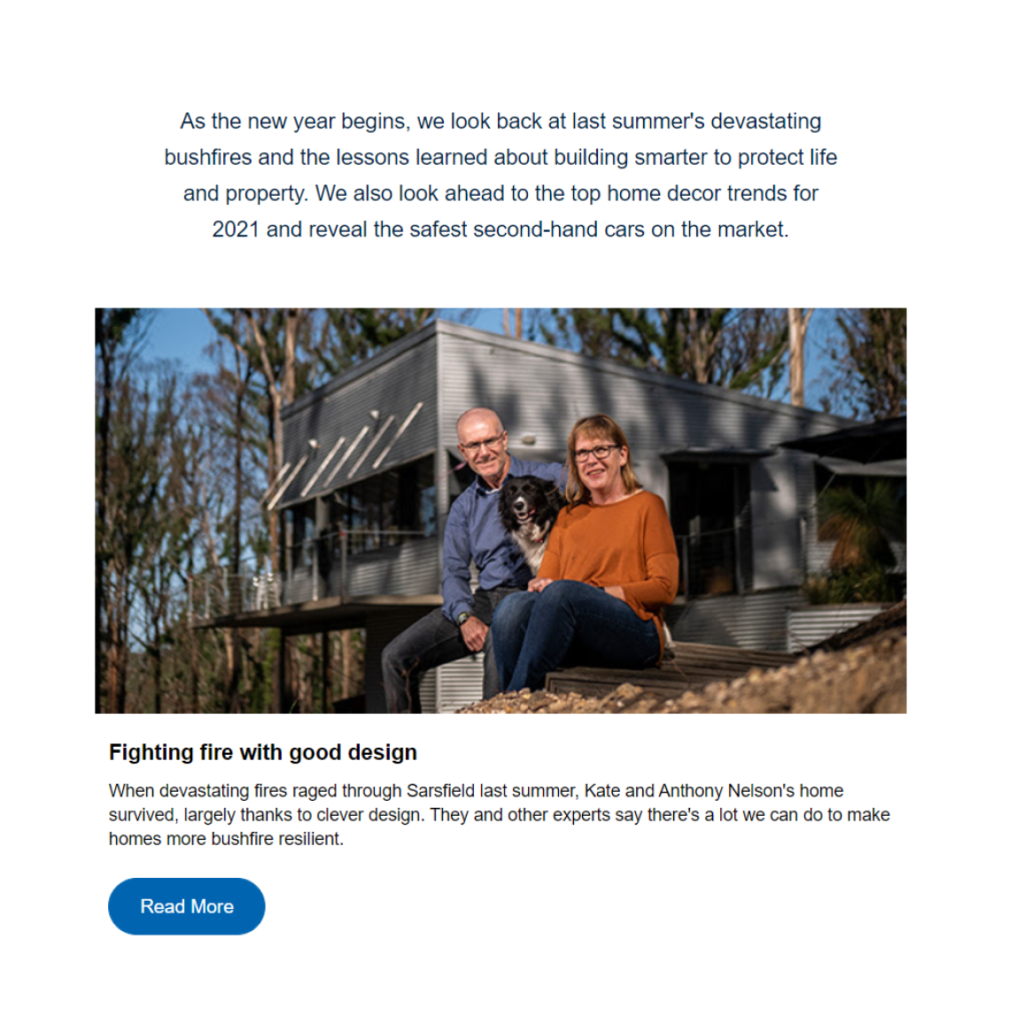
Aside from providing unique ideas, there are other ways you can provide value. Try:
- Adding links to blog posts that explore topics in-depth
- Providing lists
- Embedding social media posts into your emails
- Creating custom infographics and charts to demonstrate key points
- Adding short videos to your email (only 47% of businesses use videos, so this will make your email stand out!)
- Linking people to the content they can print like checklists or templates
Ideally, you shouldn’t use all these ideas in the same email. Doing so would make your emails confusing and far too long. Instead, use different strategies in every email to keep your content fresh and exciting.
6. Measure, optimize, and repeat
Your success with email marketing relies on your ability to adapt your content to your target audience’s tastes and needs. So, you’ll need to evaluate your marketing carefully to find what works and what doesn’t.
When assessing your emails, you want to focus on key statistics like your:
- Open rate = the rate at which subscribers open emails
- Click rate = the rate at which subscribers click emails (clicks and opens aren’t the same as some readers will click “back” before the email loads)
- CTR = the rate at which subscribers take a desired action like pressing your CTA or a link
- Inbox rate (sometimes called “deliverability rate”) = the rate at which your emails land in people’s inboxes
- Spam complaint rate = the rate at which people report your emails as spam
- Unsubscribe rate = the rate at which subscribers leave your email list
After watching these for a while, you’ll know what “normal” looks like for your brand. If you notice any significant deviations, this indicates you are doing something positive or negative. Once you know what influences your email performance, use the information to optimize your newest email campaigns.
Grow your marketing campaigns with Pathway!
Whether you’re a local insurance firm, a national insurance chain, or an insurance marketing agency, email marketing isn’t a channel you can ignore. When you plan and execute an email strategy effectively, email marketing can build a relationship with customers, help you nurture leads, and boost your revenue through cross and up-selling.
To boost your email marketing campaigns, make sure you focus on building a strong email list, send emails consistently, walk the line between “super helpful” and “spam” carefully, and share good content.
And, of course, use Pathway! Pathway offers a range of tools that can supercharge your insurance marketing, including:
- Marketing Bot, which automates your insurance email marketing efforts
- Office Bot, which automates your marketing administration tasks
- Form Builder, which gives customers a way to fill out forms digitally
- Self-Service Kiosk, which helps clients manage their own insurance
If you’d like to try Pathway, sign up here.
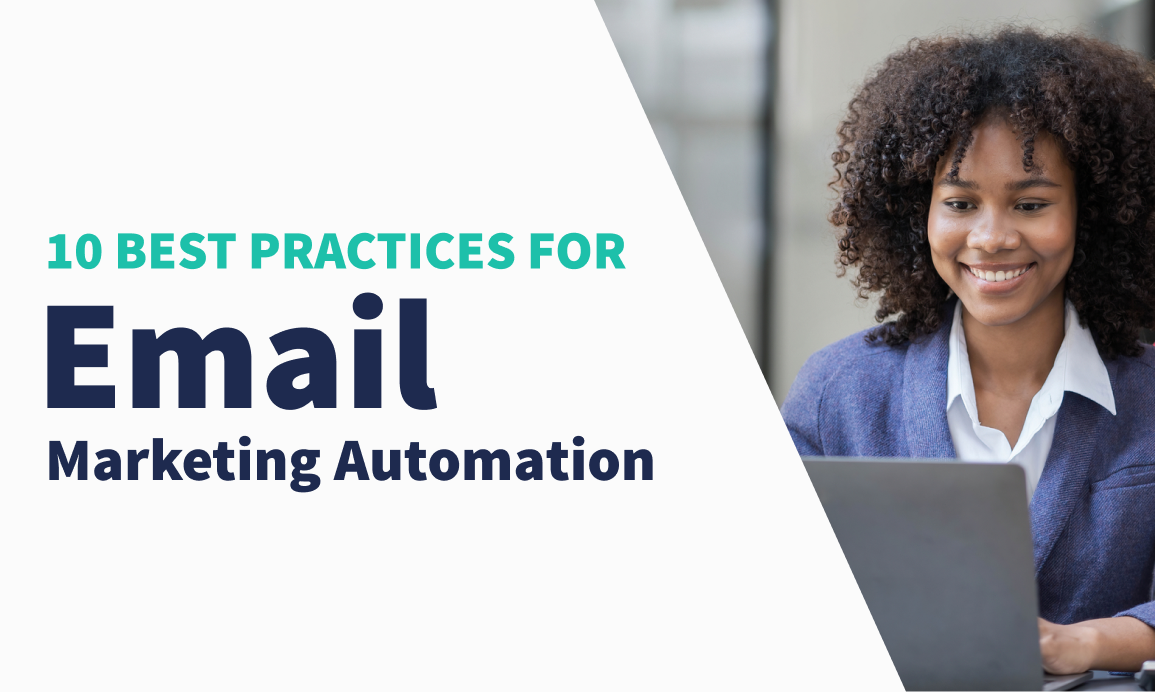

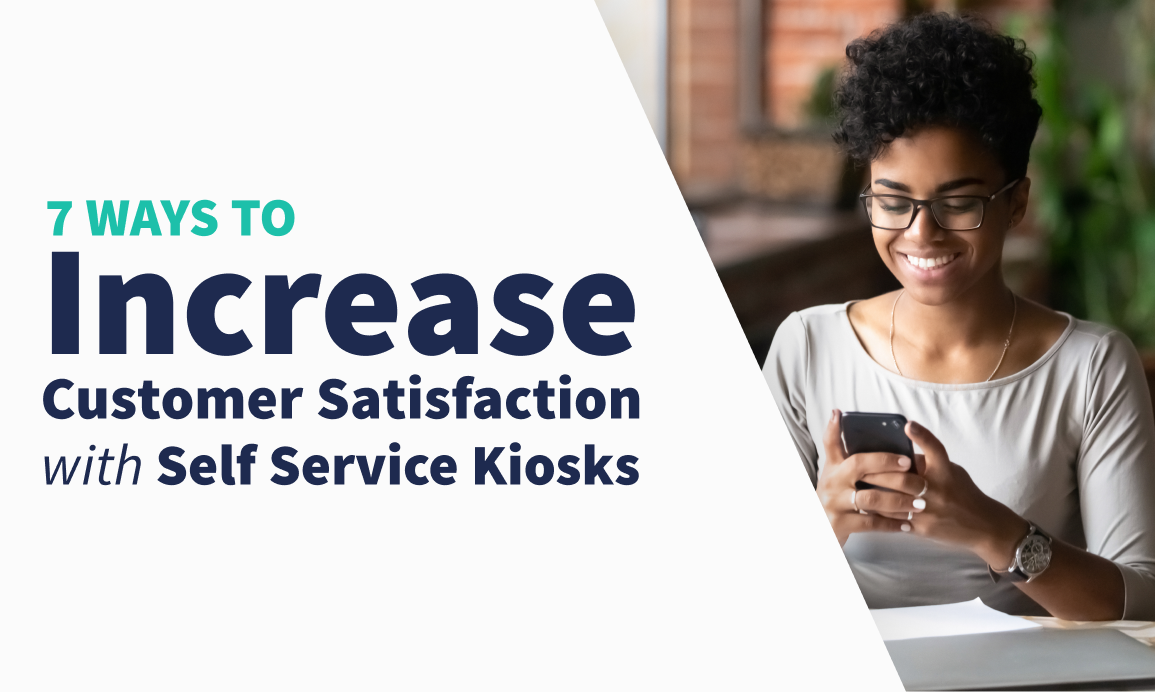
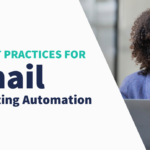

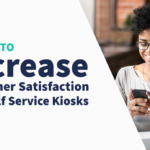
Leave a Comment